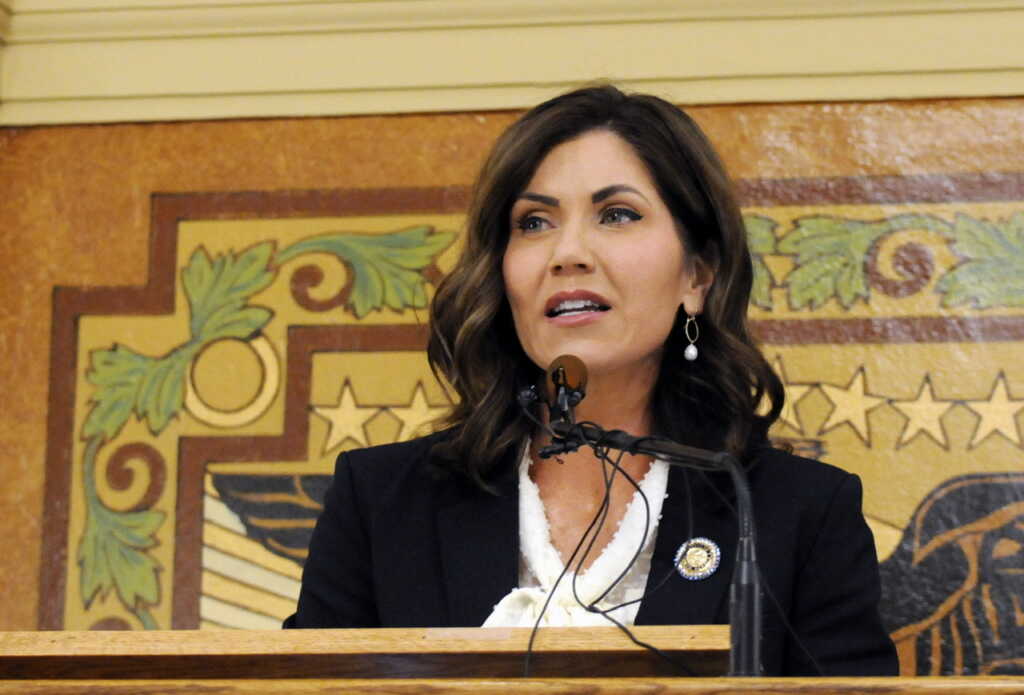As it turns out, not locking down your state might be good for the economy.
South Dakota Gov. Kristi Noem (R) might have been doing something right when she refused to implement strict lockdown measures in her state amid the ongoing coronavirus pandemic.
According to a just-released survey conducted by United Van Lines, South Dakota ranked No. 4 in the state-to-state migration patterns for 2020.
The Rapid City Journal reported:
Black Hills area realtors and builders say there’s an influx of people who are relocating permanently or buying land in the region — and the trend isn’t expected to slow anytime soon.
Newcomers from California, Washington, New York, New Jersey, Washington, D.C., Texas, Michigan, Colorado and Virginia along with Minnesota, North Dakota and Wyoming are leading the trend of relocating to South Dakota, local realtors say. Lori Barnett, owner and broker at VIP Properties’ Rapid City office, said her staff’s out-of-state clients are typically leaving large metropolitan areas, including San Diego, Austin, Minneapolis, Boulder and Breckenridge.
Barnett explained that a great deal of the interest generated for South Dakota has come as a result of draconian restrictions implemented by Democrat-led cities around the country.
“We had a strong market to start the 2020 year,” she said. “However, after COVID-19 hit and cities and states across the country began to implement massive shutdowns, people in those areas started looking to less restrictive states. Gov. Kristi Noem has certainly taken the laissez faire approach in dealing with COVID-19, which has definitely drawn attention to our state and our area in particular.”
Barnett went on to say it’s common for people to “be searching for a place to have more autonomy” in less crowded areas and with “great outdoor recreation.”
“Not having a state income tax is definitely a plus,” she added.
The analysis by United Van Lines found that the 2020 survey results showed 40% of Americans who moved “did so for a new job or job transfer,” a decrease from previous years. More than one-in-four, or 27%, “moved to be closer to family (which is significantly up over prior years).”
Michael Stoll, an economist and professor in the Department of Public Policy at the University of California, Los Angeles, said the data from last year makes clear the continued trend of Americans moving to western and southern states.
“We’re seeing that the COVID-19 pandemic has, without a doubt, accelerated broader moving trends, including retirement driving top inbound regions as the Baby Boomer generation continues to reach that next phase of life,” Stoll explained.
Major metropolitan cities — like New York (72%), Newark (72%), and Chicago (69%) — saw marked increases in outbound migration.
Eily Cummings, director of corporate communications at United Van Lines, noted that, as the pandemic brought serious lifestyle and career changes to a lot of Americans, such as a major uptick in remote work, a lot of people are “choosing to move from urban to more rural areas.”
The study, collecting data from March to October, found the top reasons for moving associated with COVID-19 were personal and family health and wellbeing (60%), a desire to be closer to loved ones (59%), changes in employment status and work style (57%), and a desired lifestyle change to improve the quality of life (53%).
Late last week, Noem shared a recent study out of Stanford University that showed sweeping lockdown measures have not been effective at quelling the spread of COVID-19.
“Put simply,” the governor wrote, “lockdowns DON’T work.”



